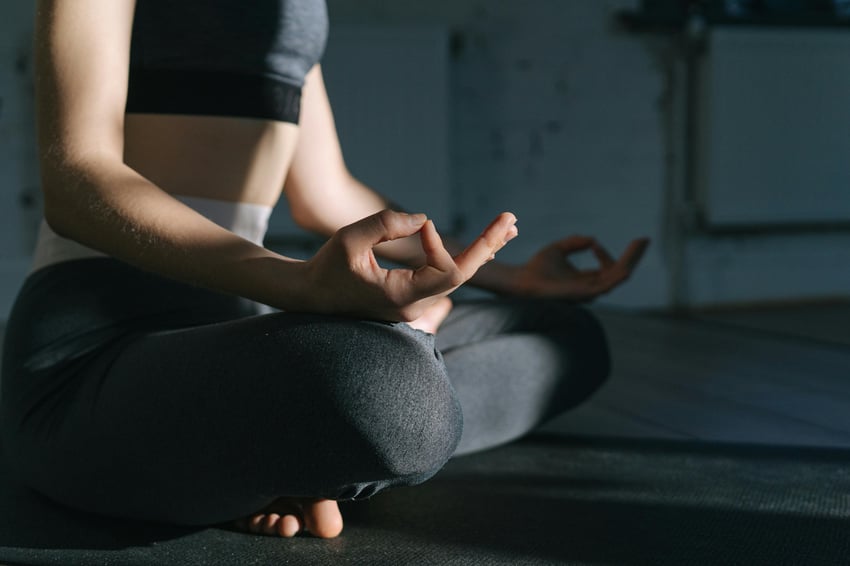
Daylight Savings Fatigue: How to Adjust to “Fall Back” Naturally
When the clocks “fall back” every November, many people find themselves feeling tired, irritable, and unable to focus for days or even weeks. Daylight savings fatigue is a common complaint, but it doesn’t have to be. By gradually adjusting your internal clock, exercising regularly, following a pre-bedtime routine, eating well, and giving your body an extra nutrient boost through IV or injection therapy, you can overcome fall back fatigue more quickly.
In this article, we explain why the time change makes you feel out of balance and how you can bounce back quickly and naturally.
Why Does Daylight Savings “Fall Back” Make Me Tired?
Turning the clocks back should feel like a bonus—an extra hour of sleep! But for many people, it’s the opposite. Why? The main cause is the disruption to your body’s internal clock, or circadian rhythms. Even a one-hour change can create mini jet lag because your sleep-wake cycle is suddenly misaligned. This disruption is compounded because your internal clock is closely linked to light-dark cycles.During the fall and winter, the sun sets earlier and earlier in the Northern Hemisphere until the winter solstice, when the days slowly begin to lengthen again. By turning the clocks back, we shift the already-early sunset even earlier in the day. This signals to our bodies that it’s time to start winding down by releasing the sleep hormone melatonin—even though it might only be five o’clock.
For many people, the shorter days and colder weather can create a cycle of inactivity and staying indoors. Lack of exercise and sunlight can make you more tired and moody and further disrupt sleep patterns, leading to more prolonged Fall Fatigue or Seasonal Affective Disorder (SAD).
What Are the Symptoms of Daylight Savings Fatigue?
So, does the time change have actual health effects? For many people, it can. Aside from feeling tired after daylight savings, you may find that you can’t think clearly or have a slower reaction time. Circadian misalignment also puts you at greater risk for depressive episodes and can disrupt your digestive and immune systems, making you more susceptible to illness.How Long Does Daylight Saving Fatigue Last?
Most people start to feel like themselves within 3–5 days, but full circadian adjustment can take up to a week. Certain groups, including children, elderly adults, and “night owls,” may take longer to adjust. People dealing with sleep disorders or chronic health conditions (mental, autoimmune, neurological, and other conditions) may continue to struggle with sleep and mood into the winter season, which may overlap with seasonal affective disorder.What Natural Remedies Help With Daylight Savings Fatigue?
There are several strategies you can use to adjust to falling back more quickly.Light Management
Light disruption is a primary cause of fall-back fatigue. Getting the most out of the shorter daylight hours and working with your body’s reactions to light can help you roll with the time change.- Get 30-45 minutes of morning sunlight immediately upon waking.
- Dim the lights and avoid bright screens in the evening.
- Use light therapy devices (10,000 lux for 20-40 minutes) if struggling to adjust.
Sleep Schedule Adjustments
- Minimize the disruption to your sleep patterns by sticking to a consistent bedtime and wake time, even on weekends.
- Prepare for the time change by gradually adjusting your schedule by 15-20 minutes per day in the days leading up to the end of daylight savings time.
- Avoid caffeine, alcohol, and large meals close to bedtime.
- Try reading before bed, rather than watching blue light–emitting screens.
Physical Activity
Moderate, regular exercise, particularly in the late afternoon, helps regulate sleep-wake cycles and boost energy levels. Even light walking can be beneficial.
Eat a Balanced Diet
It’s crucial to supply your body with the vitamins, minerals, and antioxidants it needs to adapt to the time change. Of course, with busy schedules, low energy levels, shorter days, and sometimes less physical activity, eating well is not always easy. Quicker but less healthy options (think fall comfort foods) often win out. In these cases, an added nutrient boost in the form of injection or IV therapy may help you bounce back from daylight savings fatigue.
How Can IV Therapy Help With Tiredness?
An IV therapy designed for fall-back fatigue can deliver a tailored blend of nutrients directly into your bloodstream, allowing for greater absorption and faster benefits than oral supplements.
IV Treatments for Fatigue
Hydration Room’s Jet Lag Revival IV is formulated to help your body adjust to time changes by boosting energy levels and mental clarity, supporting circadian realignment, and strengthening immune function.
The amino acid tryptophan, B vitamins, and magnesium may help reset your sleep schedule by supporting serotonin and melatonin pathways. A blend of B vitamins is designed to support energy production and cognitive function. Vitamin C and glutathione (the “mother antioxidant”) can help boost the immune system and protect against oxidative stress from sleep disruption. A proprietary vitamin blend may also support serotonin production, helping to balance mood.
Another good option is our Wellness Infusion IV, which is designed to boost energy, enhance mental clarity, and support a balanced mood. It contains key nutrients like B6, Inositol, and selenium, which can promote healthy sleep cycles by supporting the production and regulation of crucial hormones and neurotransmitters like serotonin and GABA.
For quick nutrient boosts that can help you feel balanced, injection therapies such as our Happy Shot® or B12 Shot are effective, convenient options.
Discover IV Therapy for Daylight Savings Fatigue
At Hydration Room, we offer several physician-designed IV and injection therapies to boost energy, strengthen the immune system, and get you feeling like yourself again quickly when the clocks fall back. To learn more about which treatment is best for you, book a free virtual consultation with one of our nurse practitioners today.


